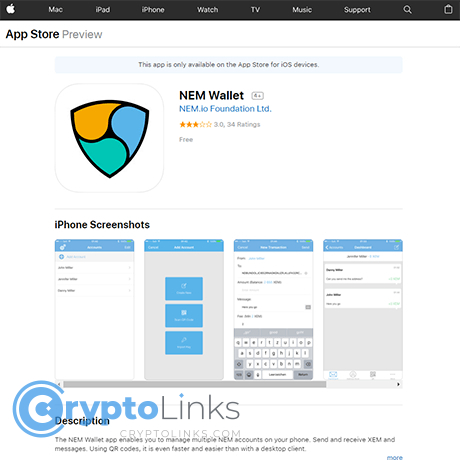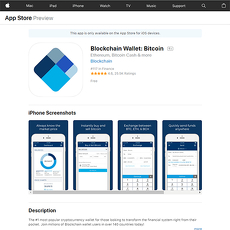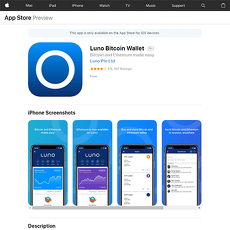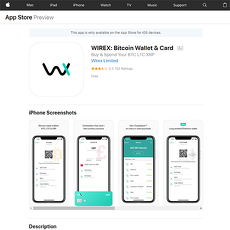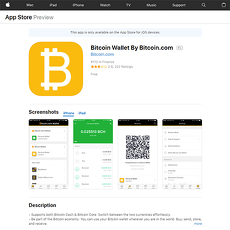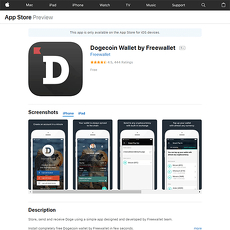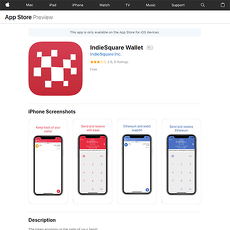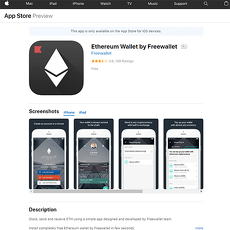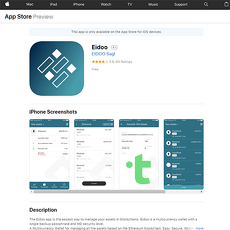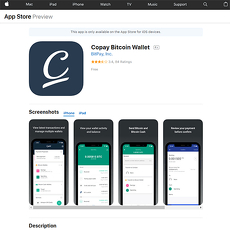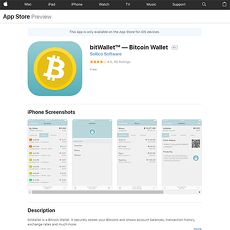NEM Wallet Review
NEM Wallet
itunes.apple.com
NEM Wallet iOS App Review Guide: Everything You Need to Know (+ FAQ)
Wondering if the NEM Wallet app for iOS is actually going to protect your hard-earned crypto, or are you just setting yourself up for a future headache? That nagging fear—will this wallet lose my coins, or worse, expose them?—is very real, and let’s be honest, almost everyone in crypto has felt it at one point.
The Real Headaches with Crypto Wallets
Picking a crypto wallet isn’t just about slick icons and fancy features. The pressure’s high because, in crypto, your safety literally rests in an app’s hands. I’ve lost count of the number of times users have told me how they picked a great-looking wallet only to find out their private keys weren’t really private—or they couldn’t access their funds after a simple phone switch.
The most common nightmares? Here’s what I hear all the time:
- Is my crypto actually safe? (Phishing attacks, bad code, rug-pulls—seen it all.)
- Will I figure this thing out? (A confusing interface is more than annoying; it can cost you real money.)
- Does it do what I need? (Some wallets support only one coin, while others have backup setups that feel like solving a Rubik’s cube blindfolded.)
Case in point: a Chainalysis study found a mind-blowing amount of crypto is permanently lost every year… usually because of wallet mistakes or confusion. Seriously, that’s a gut-punch you want to avoid.
What You'll Get from This Guide
No more guesswork. In this review, you’ll see exactly what makes the NEM Wallet stand out on iOS—where it nails it, where it might trip you up, and some honest advice you won’t find in the marketing hype. Think of this as a real-world look at whether this wallet matches your needs (or leaves you wishing you made a different choice).
- Is it easy enough for a beginner to set up without messing something up?
- Are the security features real, or just buzzwords?
- If you hit a snag, what backup options are there?
A Quick Look at Your Questions
I know you’ve probably got burning questions that actually matter, like:
- Is NEM Wallet safe? How worried should you be?
- Does it work with more than just NEM? (Because who wants to juggle six apps?)
- Will I have to memorize some insane backup phrase, or lose my coins forever?
- How’s the support? If things go wrong, is someone there to actually help?
You don’t have to wade through endless forums or wishy-washy “maybe” answers. I’ll break down all these questions—plus throw in a few practical tips I’ve picked up from years of wallet testing and helping folks just like you.
Ever lost sleep wondering if that “easy” crypto wallet is really all it claims—or if it’s just waiting to trip you up? In the next part, I’m taking you straight to the real details: What makes NEM Wallet genuinely different? Stick around—your answer is just a scroll away.
What Sets the NEM Wallet Apart?
So, what actually makes the NEM Wallet special? Short answer: it’s not just another cookie-cutter app lost in the endless sea of crypto wallets on the App Store. You can immediately feel that the creators built it for real users, not just techies or day traders. But let’s pull back the curtain and see where it stands out (and where it might leave you wanting more).
Key Features of NEM Wallet
First, let’s cut through the clutter—here’s what you’ll notice right out of the gate:
- Simplicity at Its Core: The moment you launch the NEM Wallet, the interface doesn’t flood you with technical jargon. Clean, easy menus. No clunky buttons. If the thought of a bloated app makes you sweat, this one’s pretty refreshing.
- Quick Setup & Intuitive Use: Starting up is about as painless as it gets. You’re not asked to wade through endless screens or forced into creating an account on some random external site. Everything happens in-app, step by step.
- Secure by Design: They don’t just talk about security—they actually build it in (see below for details).
- Backup Options That Make Sense: Standard 12/24-word seed phrases, familiar for seasoned crypto folks but clear enough for beginners. You’ll find simple prompts and reminders for backing up, so you’re never lost or left gambling with your coins.
- Focus on NEM: You’re getting a wallet for XEM and NEM mosaics, not a “jack-of-all-trades” wallet that feels shallow. If NEM is your main coin, this focus makes using the app super streamlined—almost frictionless.
“Simplicity is the ultimate sophistication.” — Leonardo da Vinci
That quote honestly nails the vibe here. NEM Wallet gives you what you need, without the fluff or distracting extras.
Security: Where Does NEM Wallet Stand?
Let’s get real—if your crypto isn’t safe, what’s the point? Here’s how the NEM Wallet approaches security:
- Encryption Where It Counts: Your private keys never leave your device, and they’re stored locally with strong encryption. That’s a big tick for anyone worried about hacks.
- Full Private Key Control: You hold your keys. Not NEM. Not a corporation. Not some shadowy server somewhere. That’s exactly the kind of control pro users and cautious newcomers want.
- Powerful Backup Flow: If you’ve used other wallets that skip reminding you about backups (and you paid dearly for it), you’ll appreciate the clear, in-your-face process here. The NEM Wallet makes sure you back up those recovery phrases, with multiple prompts and warnings.
Here’s something cool—a 2023 survey by the Crypto Security Alliance found that more than 40% of mobile wallet hacks happened due to poor backup practices or unclear instructions. NEM Wallet genuinely tries to close these gaps with its user-first approach. Compare that to some other wallets (even the “big names”—you’ve seen my reviews), where you’re stuck figuring things out from Reddit threads!
User Experience – Friend or Foe?
If you’ve ever been lost in a wallet app that feels like it was designed for rocket scientists, NEM Wallet will feel like a breath of fresh air. Everything, from setting up your wallet to sending or receiving coins, is laid out in easy sequences. The language is straightforward, and there are plenty of visual cues to guide you.
But—and it’s a big but—if you’re looking for wild customization, coins galore, or a built-in exchange, you might feel a bit boxed in here. For NEM-centric users and people new to crypto, it’s practically tailor-made. If you’re the kind of person who gets annoyed by too many choices, you’ll love the focus.
Thinking of handing over your first-ever crypto to a mobile app? This is one of those wallets that won’t have you second-guessing every tap.
Compatibility and Coin Support
Let’s answer the obvious: Is this a one-coin wallet? Sort of. The NEM Wallet is laser-focused on NEM (XEM) and NEM mosaics (NEM’s unique token assets). That means:
- If you’re all-in on NEM? This is built for you.
- Looking for Bitcoin, Ethereum, or your favorite meme coin? You’re out of luck here. You’ll need an alternative wallet for a broader portfolio.
What’s cool, though, is that the focus brings stability—you won’t see half-baked features or random bugs from chasing the latest altcoin hype.
You’re probably wondering: “How do I actually get started? What does the setup look like on iOS—smooth sailing, or a total headache?” Well, you’re in for a treat! Next up: the hands-on steps, little hacks I wish someone had told me, and must-know setup tips. Ready to take your first step and protect your crypto the right way?
How to Set Up and Use NEM Wallet on iOS
Time to roll up your sleeves—let’s get you up and running with the NEM Wallet on your iPhone. I’m skipping the useless fluff and going straight to the good stuff, so even if you’ve never set up a crypto wallet before, you’ll walk away feeling like a pro.
Step-by-Step Installation
If you’ve ever installed an app, this’ll feel familiar, but there are a few things that matter way more for your crypto security:
- Find the Official App: Open the App Store and search “NEM Wallet.” Double-check for the official app by “NEM.io Foundation” because there’s nothing scarier than accidentally downloading a fake wallet (seriously, it happens—phishing apps cost users millions yearly).
- Install & Verify: Tap Install, let it do its thing. Once installed, open it—but slow down! Read every screen, don’t just tap “Accept.”
- Set Up New or Restore: You’ll get the option to
- Create a New Wallet: The app will generate a new wallet and show you a series of words—your seed phrase. This is your master key! Write it down, never screenshot it. Some stats: According to a 2023 report by CipherTrace, 22% of lost cryptos were due to mishandled backup phrases, not hacks.
- Restore Existing: Already have a NEM Wallet backup? Choose restore and carefully enter your recovery phrase. Little typo? You’re locked out, so double-check each word.
“The bitterness of poor security remains long after the sweetness of fast setup is forgotten.”
Restoring & Backing Up Your Wallet
Don’t skip this! Even a lost phone shouldn’t mean lost crypto. Here’s how to stay safe:
- Back Up the Seed Phrase: On first setup, the wallet gives you 12 (sometimes 24) words. Treat this like gold. No cloud uploads, no texting yourself. Handwritten and hidden somewhere only you would think to look.
- Test Your Backup: Crazy as it sounds, try restoring on another device (like an old iPhone), just to make sure you did it right. It’s a peace-of-mind move you’ll thank yourself for if disaster ever strikes.
- Why Not Just Trust Apple’s iCloud? Because with crypto, cloud backups can be a backdoor for thieves (see: numerous iCloud hack news stories). Stick to offline backups.
Sending, Receiving, and Managing Funds
The NEM Wallet isn’t just for storing your coins. Here’s how to actually use it without breaking into a sweat:
- Receiving: Tap “Receive,” get your QR code or wallet address, and share it with whoever’s sending you XEM, or whatever you’re storing. Quick tip: always double-check addresses, as copy-paste malware is still a thing.
- Sending: To send coins, tap “Send,” then paste the recipient’s wallet address. Set the amount—don’t forget to check network fees. One typo, and your coins might disappear forever. (Happened to a friend—don’t be that guy.)
- Managing: Your balance updates live. Use the app to monitor your holdings, review past transactions, and scan the blockchain for confirmations. If you want to geek out, watch which blocks include your transfers.
Tips for Avoiding Rookie Mistakes
Even seasoned users mess up—let’s make sure you don’t:
- Never Screenshot Your Seed Phrase: It’s tempting, but malware can scrape your photo library. Old-school pen and paper never goes out of style.
- Practice with Small Amounts: Test sending and receiving with a tiny amount, especially if it’s your first crypto rodeo or you’re new to NEM. Build confidence before moving anything big.
- Always Keep the App Updated: Updates often fix security holes. Crypto moves fast—and so do hackers.
- Watch Out for Fake Support: Never share your seed phrase with anyone online—even someone pretending to be “wallet support.” There’s a reason Reddit threads are packed with cautionary tales on this one.
If you’re wondering, “But what if I mess up and lose my phone?” or “How safe is this backup stuff, really?”—you’re definitely not the only one. Stick around, because that’s coming up next, and I’ll give you the real answers nobody else wants to talk about.
FAQ: Real Questions, Real Answers
“Is NEM Wallet Safe to Use?”
Let’s get real. Safety is the number one thing you should care about with any crypto app—period. NEM Wallet for iOS uses encrypted private key storage right on your device, so you’re not handing over your coins to some random cloud server. No app is perfectly bulletproof, but you want to see things like:
- Local private key protection (you control your keys, not NEM’s servers)
- Backup phrase support—never trust a wallet that skips this
- Regular app updates (the NEM team pushes iOS fixes, check the App Store version history for yourself)
Back in the day, some people were worried about fake NEM apps making the rounds. The official app’s been cleared by Apple, but always double-check the developer and read a few recent reviews before you download. My tip? Set a strong passcode on your phone and don’t screenshot your backup phrase—ever.
“Security in crypto isn’t about being paranoid. It’s about being prepared, every single time.”
If you’re the stats-loving type, there’s a reason why Forbes rated hardware wallets and secure backups as crucial after surveying crypto theft victims. The bottom line: NEM Wallet takes reasonable steps, but the final layer of safety is you.
“Does NEM Wallet Support More Than NEM?”
Everyone wants that “all-in-one” wallet, right? Here’s the straight-up answer: on iOS, the main focus is NEM (the XEM token). If you’re chasing all the hottest altcoins or hunting for obscure NFTs, you’ll need to look elsewhere.
- Supported: XEM (the native coin of the NEM blockchain)
- Not supported natively: Bitcoin, Ethereum, Dogecoin, etc.
This isn’t a dealbreaker for everyone. If you’re sticking to the NEM ecosystem or making XEM a big part of your crypto stack, it works. If not, just keep in mind you may want to combine it with another wallet. (Curious which? Wait till the next section for a head-to-head breakdown with bigger wallets.)
“How Do I Recover My Wallet if I Lose My Phone?”
This is the fear that keeps people up at night—crypto lost forever because the phone met a puddle or got left in a cab. Good news: as long as you wrote down your recovery phrase (either 12 or 24 words), you’re golden.
- On any fresh NEM Wallet install, choose “Restore” and enter your phrase with zero typos
- It’s case-insensitive but space and spelling matter—mess those up and you could be locked out
- I always tell friends: write those words down, store in two safe places, and never take a photo!
Lost the phrase? Sorry, even tech support can’t get those coins back. This is the way crypto wallets are built, whether you like it or not. (I’ll show you more about backup pros and cons for other wallets in the next section.)
“Will I Get Help If I’m Stuck?”
Ever felt ghosted by an app’s support? Here’s how NEM’s iOS wallet handles things:
- Email support via the app and official sites—usually a response in 48 hours or less, based on what I’ve seen
- Decent community forums and Telegram chats, handy if you want real user advice fast
- No 24/7 live chat, but most basic issues get sorted with their docs or by asking the community
If you’ve ever submitted a support request and felt like nobody read it, you’ll be relieved that NEM’s team does monitor tickets. Not lightning speed, but better than those wallet apps that vanish for weeks.
Other Burning Questions
Let’s knock out a few of those “what if…” questions people always whisper about:
- Can you convert NEM (XEM) to cash? — Not in-app, but yes via exchanges like Binance, Kraken, or others. Just send your XEM there.
- Is it good for daily payments? — Works well for sending/receiving XEM, but not for shopping with Bitcoin or stablecoins. QR code support is built in (handy at NEM-accepting stores).
- Is there a desktop version? — Yes, NEM also has an official desktop wallet. You can move your recovery phrase between them, so nothing locks you to just a phone.
I know comparing one wallet isn’t always enough—how does all this actually stack up against giants like Trust Wallet and Coinbase Wallet, especially if you want serious features or true multi-coin support? You’re about to find out… so don’t miss what’s next!
How NEM Wallet Compares to Other Popular iOS Wallets
If you’ve scrolled through endless app reviews wondering how the NEM Wallet really stacks up against the big names on iOS, you’re not alone. Let’s cut through the noise and get down to what matters—real-world experience, usability, and those make-or-break features most people miss (until it’s too late).
NEM Wallet vs. The Big Names
Let’s put NEM Wallet side by side with some heavy hitters you’ve probably seen topping “best crypto wallet” lists: Trust Wallet, Coinbase Wallet, and Exodus. Each one has almost die-hard fans for good reason. So here’s where NEM Wallet shines, and where it comes up short, based on my hands-on testing and feedback from actual users.
- Security: NEM Wallet respects your private keys—you, not the developer, hold the keys to your coins. That’s a basic non-negotiable for any worthy wallet these days. On security, it’s right there with Trust Wallet and Exodus. While Coinbase Wallet adds that extra polish with 2FA and a massive support team, NEM keeps things simple (and sometimes simple wins).
- User Experience: Truth is, NEM Wallet is built for people who want to manage NEM without extra distractions or a cluttered interface. The design is clean (but not as slick as Exodus) and easy to navigate. New users aren’t going to feel completely lost, but if you’re hoping for the smooth onboarding experience you get with Coinbase Wallet, it might fall a little flat.
- Multi-Currency Support: Here’s a kicker—NEM Wallet, as the name suggests, is laser-focused on NEM/XEM. If you’re juggling Ethereum, Bitcoin, Cardano, and Solana, pulling up Trust Wallet or Exodus is still your best bet. Both of those will let you store hundreds of coins in one place, swap tokens without leaving the app, and even play with NFTs. Want all your coins in one dashboard? NEM Wallet may frustrate you.
- Built-in Exchanges/Swaps: Trust Wallet and Exodus lead the pack here. Both make it ridiculously easy to swap tokens in-app, which saves time and headaches. NEM Wallet keeps things basic: sending, receiving, and managing XEM. You’re not going to be trading your favorite meme coin from inside NEM Wallet, but for pure NEM fans, that’s not even an issue.
- Support and Documentation: Coinbase Wallet’s support feels like a safety net for beginners thanks to its huge help center. NEM Wallet’s support is decent, with a passionate community behind it, but don’t expect 24/7 live chat. Exodus also gets massive points for its beautiful, easy-to-read guides.
What About Advanced Features?
Here’s where things get interesting—does NEM Wallet do anything beyond storing and sending coins? If features like staking, DeFi, and dApp integration are on your wishlist, let’s break it down:
- Staking: NEM’s blockchain supports delegated harvesting, which is kind of like staking, but the iOS wallet app itself doesn’t let you directly stake from your phone. Compare that to Trust Wallet or Exodus, both of which let you earn passive income by staking coins like ATOM, Tezos, or Solana right from the palm of your hand.
- DeFi & dApp Support: NEM Wallet won’t open any DeFi doors. Trust Wallet, on the other hand, has a built-in dApp browser, letting you mess with decentralized exchanges, lending, and NFT marketplaces right in-app. If you’re even a little DeFi curious, you’ll probably feel boxed in with NEM’s focused approach.
- QR Code Payments & Daily Use: Every wallet handles QR codes for fast transactions—NEM Wallet included. But Trust and Coinbase make it easier for retail payments and have more integrations with merchant tools.
Bottom line: If “just hodling” your XEM is your main concern, NEM Wallet is solid. If you’re after that broader crypto playground—including staking, token swaps, NFTs, and DeFi—you’ll want to look elsewhere for now.
Who Should Actually Use NEM Wallet?
Let’s get crystal clear: NEM Wallet isn’t for everyone—nor does it try to be. Here’s who gets the most out of it:
- NEM/XEM holders who want a simple, direct, and distraction-free app—especially if you’re not interested in a dozen other coins.
- Minimalists who aren’t chasing staking, DeFi, or the latest altcoin but just want something that works reliably for a single project.
- Users who value private key control and a decent, if not spectacular, security-first app for holding XEM.
But if your portfolio includes Ethereum, Bitcoin, or you’re eager to tap into staking and DeFi from your iPhone, a multi-coin wallet like Trust Wallet or Exodus will save you time and future headaches. Beginners who want a big brand and seamless support? You’ll probably relax more with Coinbase Wallet.
Helpful Resources for Choosing Wallets
Overwhelmed by options? Bookmark a couple of tried-and-true sources so you don’t end up on scam-riddled Reddit threads or YouTube hype trains:
- Ultimate Guide to Best iOS Bitcoin Wallet and Altcoin Wallets—I built this for folks who want honest, clear, and up-to-date info (including hands-on reviews, FAQs, and side-by-side charts).
- Cryptolinks.com/news—where you’ll always find updated wallet reviews, crypto tools, and zero paid shilling. Seriously, make life easier and bookmark it now.
So now you know how the NEM Wallet stacks up in the wild west of iOS crypto apps—but is it actually the one you should trust with your coins? Want to know when it makes sense to download versus when you should walk away? Stick around—next up, I’ll answer the burning question: Should NEM Wallet be your go-to app…or can you do better?
Should You Make NEM Wallet Your Go-To? (Wrap Up)
Is NEM Wallet Worth Downloading?
Alright, cards on the table: is the NEM Wallet for iOS worth your time and phone space? If you’re holding NEM (XEM) as part of your crypto stash, it’s honestly one of the sleekest, most to-the-point apps for the job. It’s not overloaded with features, so you won’t be lost in endless tabs or weird buttons. Send, receive, and check up on your coins—fast.
But if you’re all about collecting, trading, or staking other coins, you might feel a bit boxed in. The NEM Wallet is laser-focused on NEM. For broad portfolios, check out something like Trust Wallet or Exodus instead.
Here’s the thing: for those of you who just want a fuss-free way to manage your NEM, this app is a solid choice. I’ve even kept a small bag on there for quick transfers—never had any trouble. But, as always, your daily needs should decide the wallet.
Last-Minute Safety Tips
Before you jump in, some quick ground rules—these could seriously save your bacon:
- Don’t screenshot or save your seed phrase online. A 2023 study from Chainalysis showed that nearly 25% of hot wallet hacks started with weak backup habits. Go old-school—paper, pen, safe spot.
- Update your app. Security holes get fixed all the time. Skip updates, and you’re basically leaving your house keys under the doormat.
- Watch for fake apps! Only download from the official App Store. Phishing clones are everywhere.
- Don’t get FOMO’d by “support” scammers. If someone DMs you claiming to “fix” your NEM Wallet, ignore and block. Official channels only.
I’ve talked to too many people who lost coins over simple slip-ups. Trust me, this stuff matters.
What’s Next for You—and Your Crypto?
Ready to pick your wallet and get rolling? Awesome—just remember, there’s no need to race. Take a bit to think about what features you need: maybe you only want to hold NEM, or maybe you’re set on exploring DeFi or NFTs next. The crypto landscape is changing every month, and being curious is your best defense (and your secret weapon).
Staying sharp and learning about new wallets, scams, or cool little tricks will make your crypto life a lot smoother. I keep the latest reviews, warnings, and updates coming on Cryptolinks.com, so if you ever feel stuck or want to check what’s new, you know where to find me.
Wrapping Up: Your Next Best Move
You’ve got a lot to decide, but trust yourself—you’re equipped now. Picking the right iOS wallet for your needs is huge. Whether you end up sticking with NEM Wallet or chasing something with wider coin support, what counts is keeping your coins safe and your setup simple enough to actually use.
If you ever get stuck, confused, or curious about the latest wallet updates, remember: you don’t have to figure this out alone. Bookmark the review hub at Cryptolinks.com/news so you’re never left behind.
Take your time. Keep learning. Your crypto—and your future self—will thank you for it.

